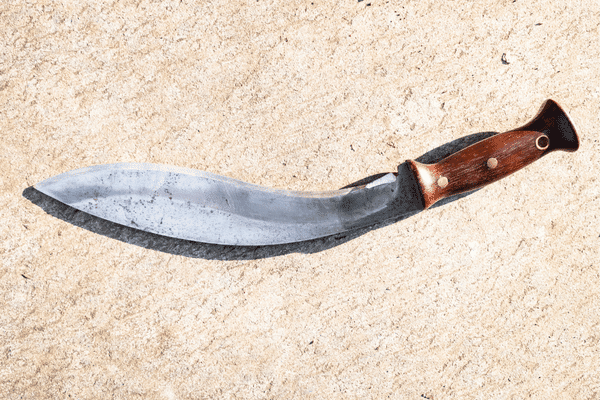Unveiling the Distinctions: Katana vs. Katana Replica.
When delving into the world of Japanese swords, the katana stands out as an iconic symbol of precision and craftsmanship. However, in the market, you may encounter not only authentic katanas but also their replicas. Let's explore the key differences between a genuine katana and a katana replica, understanding the nuances that set them apart.
The Authentic Katana
Craftsmanship and Tradition
The authentic katana is a product of centuries-old Japanese swordsmithing traditions. Crafted with meticulous attention to detail, it embodies a profound connection to Japanese culture and history. Traditional katana makers, known as "tosho," employ time-honored techniques, infusing the blade with cultural significance.
Materials
Authentic katanas are typically forged from high-quality steel, often folded multiple times to enhance strength and flexibility. The blade undergoes a precise heat-treating process called "yakibatsuchi," ensuring the perfect balance of hardness and durability.
Characteristics
A genuine katana features a curved, slender blade with a single edge. The distinctive hamon, a wavy line along the blade, results from the differential hardening process. The hilt, known as the "tsuka," is traditionally wrapped in rayskin and silk or cotton cord, providing a secure grip.
The Katana Replica
Mass Production
Katana replicas, in contrast, are often produced on a larger scale using modern manufacturing techniques. While they may capture the overall appearance of a katana, the mass production diminishes the individualized craftsmanship found in authentic counterparts.
Materials and Construction
Replicas may be constructed from materials like stainless steel or other alloys, deviating from the traditional high-carbon steel used in genuine katanas. This affects not only the aesthetic but also the blade's performance and durability. Replicas may lack the intricate folding process crucial to the strength of authentic katanas.
Aesthetic Similarities
Katana replicas are designed to emulate the appearance of authentic katanas closely. They often feature a curved blade, a hamon-like pattern, and a tsuka wrapped in synthetic materials. While visually resembling a true katana, replicas may lack the nuanced details that aficionados value.
The Decision: Authenticity vs. Affordability
Purpose and Intent
Choosing between a katana sword and a katana replica boils down to your purpose. If you seek a symbol of tradition, a genuine katana is unmatched. Authentic katanas are investments, appreciated for their historical significance and craftsmanship. On the other hand, replicas can serve admirably as display pieces, practice weapons, or costume accessories.
Budget Considerations
Authentic katanas often come with a higher price tag, reflective of the craftsmanship, materials, and cultural value. Replicas offer a more budget-friendly alternative for those who appreciate the aesthetic but may not require the historical authenticity.
Conclusion
In the realm of Japanese swords, the choice between a katana and a katana replica hinges on your objectives and preferences. The authentic katana, with its rich history and meticulous craftsmanship, stands as a testament to Japanese culture. Meanwhile, replicas provide an accessible entry point for enthusiasts, allowing them to enjoy the aesthetic without the investment.
In the end, whether you opt for the genuine article or a replica, both carry a unique charm. Understanding the distinctions empowers you to make an informed decision, ensuring that your choice aligns with your appreciation for tradition, aesthetics, and functionality.




Comments
Post a Comment